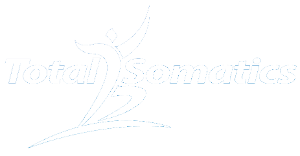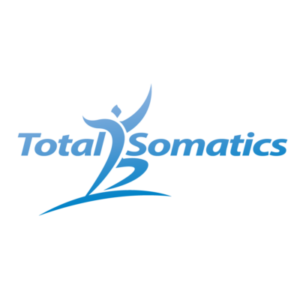Do you REALLY have control over your coordination and posture?
In previous blogs I have discussed how our internal awareness to the way we move and control our muscles can be very challenging. But why? Surely as intelligent adults we have full control of how we move our body. Unfortunately this is not the case! In today’s blog I am going to discuss what this awareness actually is, why we cannot control certain muscles and how we can REGAIN coordination and control areas of our body which have been causing pain, limited mobility and a change in how you walk and move.
Body awareness
Our Central and peripheral nervous systems are amazing and work so well together. One system which the nervous system provides information for is the Proprioceptive System. It is often referred to as our sixth sense.
The proprioceptive system involves a process known as PROPRIOCEPTION. It is the process by which the body can vary muscle contraction in immediate response to incoming information regarding external forces. It is able to do this by utilising the stretch receptors in the muscles to keep track of the joint position of the body. Proprioception and Kinesthesia (see my previous blogs for further information on Kinesthesia) are the sensory feedback mechanisms for motor control and posture. We also have the vestibular system which is located in the inner ear and helps to orientate and balance the body. This amazing function happens unconsciously whilst we go about our daily business. The brain receives and sends information to help adjust the muscles and joints so that balance and movement continues.
 This is where problems can occur though. If we have had an injury, for example on our foot, our brain adjusts to this issue subconsciously. We begin to walk with our body load on the ‘uninjured’ side. The brain, with the help from the proprioceptive system will adjust to this ‘new normal’ and change our biomechanics or the way we move. The brain will try to help the issue as much as possible by contracting waist muscles on the injured side to ensure less weight is loaded through the foot. There will often be a rotation on the pelvis to compensate the the new way of movement. As a result of this, the person will also notice their one shoulder sits higher than the other.
This is where problems can occur though. If we have had an injury, for example on our foot, our brain adjusts to this issue subconsciously. We begin to walk with our body load on the ‘uninjured’ side. The brain, with the help from the proprioceptive system will adjust to this ‘new normal’ and change our biomechanics or the way we move. The brain will try to help the issue as much as possible by contracting waist muscles on the injured side to ensure less weight is loaded through the foot. There will often be a rotation on the pelvis to compensate the the new way of movement. As a result of this, the person will also notice their one shoulder sits higher than the other.
Another example of how a habitual behaviour can influence the proprioceptive system and by extension the brain is how we position ourself all day, for instance at a desk. If we develop a habitual action, the brain will also adjust the muscles and joints to this ‘new normal.’ So overtime we find that our head juts forward, the shoulders roll forward, our tail bone is tucked up and we have difficulty breathing deeply. Before we know it, we are suffering with neck, shoulder and lower back pain.
But can we reverse the bad habits we have developed?
The answer is yes. Due to neuroplasticity in our brain, we have developed and strengthened the brain to operate and hold itself in this poor pose. But we can ‘de-create’ these poses by using the proprioceptive system to communicate with the brain and change the way the muscles and joints have been held for such a long time.
The modality Somatics works heavily with the proprioceptive system to bring about change in the neuromuscular system. Somatics is a method which develops an increase in awareness by consciously contracting, releasing and relaxing muscles and muscle groups. This leads to neural changes and neurodifferentiation. This is done by a Somatics educator or Clinical Somatics practitioner teaching you to increase your sensory awareness to how the muscles should feel before, during and after movement. Somatic Education is all about training you to use more feedback from your senses, so you really do have full control of muscles and joints. In my clinical practice I see many clients who exhibit pain and limited mobility. When we start working either in a class, online or one on one clinical session, the person notices that when they want a certain muscle to contract, they are unable to do it! They are often amazed and say that they are focusing on that area, but it is as if it has gone to sleep! It has! In Somatics we refer to this lack of control as Sensory Motor Amnesia (SMA). The sensorimotor portion of the brain which controls that particular part of the body has developed amnesia. 
It has simply forgotten how to switch the muscles on and off voluntarily. For such a long time the proprioceptive system and the brain have adapted the posture of that person from the sensory feedback they have received; such as being slumped over a desk for hours on end. As a result, certain muscles stay habitually tight and others are switched off, causing an imbalance in one’s posture. So when the person tries to move a chronically tight muscle, it has great difficulty doing it. For so long it has been switched on and doesn’t know how to relax. This is where Somatics comes into play. With specific movements, we are able to regain control of tight muscles and create healthier tissues. Somatics works directly with the brain to retrain its communication with the body, in order to relax chronically tight muscles, improve mobility and reduce pain. Somatics is very different to stretching and when people practise Somatics regularly they find that they are able to move freely and only this week one of my clients said the following to me,
“I have practised Yoga for years but always had a stiff back afterwards. I could never shift my back pain. I am very flexible but that didn’t seem to relieve my pain. I have been doing Somatics for 7 months and within two weeks of learning these movements, my back pain had gone. I do get back pain from time to time with work, but as soon as I get home, I do my Somatic movements and the pain disappears. I can’t believe that I haven’t stretched for 7 months, and yet I have more movement in my muscles and joints that when I use to stretch. Somatics is fantastic and I feel everybody should be doing it.”
This client is just one of many who have found Somatics has helped them regain control of their muscles, improve their mobility, reduce pain and improve their posture. Total Somatics covers the subject of Mindfulness. So when you work with me, I teach you how you can develop mindfulness in Somatics and elsewhere. Every person I have worked with has said how Somatics opens their eyes to a whole new level of understanding. They hold themselves, move and think differently. These skills that you will acquire really empower you. You learn how the mind and body cannot be separated. What we think or get told by certain well meaning health professionals can create a figurative corset or bandage to our limb or body region. For example, they may tell you to stop moving in a certain way or reduce natural movement range. This causes us to become over protective or apprehensive about moving it freely. So we start to become stiffer in our movement and eventually the affected area and elsewhere can become almost immobilised.
When you learn how we can move mindfully with Somatics, the changes are pretty amazing.
Try for yourself and see how these gentle movement sequences plus mindfulness skills can help you return to a better quality of life.
The Mindfulness with Total Somatics online program can be performed in the comfort of your own home. The introductory online program runs for 10 weeks and is at your own pace.
For more details visit www.TotalSomatics.com












Leave a Reply